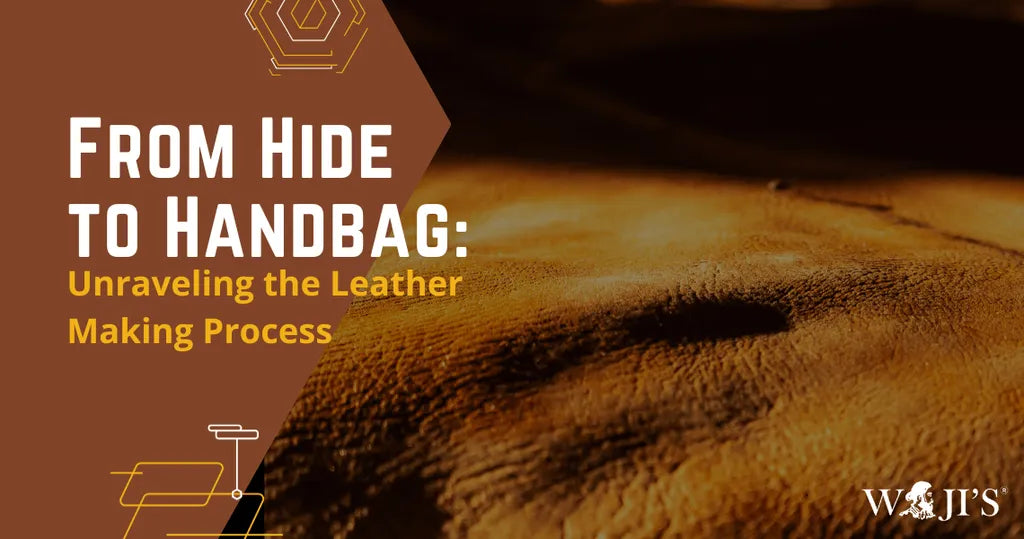
From Hide to Handbag: Unraveling the Leather Making Process
When we admire a beautifully crafted leather handbag, we often overlook the intricate process that transforms a simple animal hide into a luxurious accessory.
In this blog post, we will unravel the fascinating journey from hide to handbag, shedding light on the meticulous leather making process that artisans undertake. Let's dive deep into the world of leather craftsmanship and understand the steps that bring your favorite handbags to life.
Introduction: The Artistry of Leather Making
Leather making is an ancient craft that marries tradition with innovation. Skilled artisans leverage age-old techniques and cutting-edge technology to create high-quality leather goods. From selecting the finest hides to the final stitching, every step demands expertise, precision, and a profound understanding of the material.
Step 1: Sourcing Quality Hides

The journey of a leather handbag begins with the selection of premium hides. Skilled professionals meticulously inspect and grade hides, ensuring they meet the desired quality standards. Factors such as texture, thickness, and natural markings are taken into account, guaranteeing the end product's durability and visual appeal.
Step 2: Tanning Process

Tanning is a critical phase that preserves the hide and gives it the desired characteristics. Traditional tanning methods use natural extracts, while modern techniques involve chemical processes. Whichever method is employed, the goal remains the same: to make the leather supple, resistant to decay, and ready for the next stages of production.
Step 3: Dyeing and Coloring
Leather can be transformed into a spectrum of colors to match fashion trends and preferences. Skilled artisans mix and apply dyes to achieve the desired shades, creating a rich, uniform color that enhances the leather's natural beauty. This step demands an artistic eye and an understanding of how different dyes interact with the material.

Step 4: Cutting and Shaping

Precision is paramount when cutting leather. Artisans use templates to cut the leather into various pieces, ensuring each component fits perfectly in the final design. Computerized cutting machines have streamlined this process, enhancing efficiency without compromising accuracy.
Step 5: Stitching and Assembling

Stitching is where individual pieces come together to form the final product. Experienced craftsmen use specialized tools to create sturdy seams, ensuring the accessory can withstand daily wear and tear. The choice of stitching pattern and thread adds to the bag's aesthetic appeal and structural integrity.
Step 6: Finishing Touches

The finishing touches elevate a leather handbag from ordinary to extraordinary. Artisans polish the surface, apply protective coatings, and add hardware elements such as zippers, clasps, and handles. These details not only enhance the bag's functionality but also contribute to its overall elegance.
Appreciating the Craftsmanship
The journey from hide to handbag is a testament to the dedication and skill of leather artisans. Each step in the process adds value, resulting in a high-quality, stylish accessory that stands the test of time. The next time you carry a leather handbag, take a moment to appreciate the craftsmanship behind it — a harmonious blend of tradition, artistry, and innovation.

